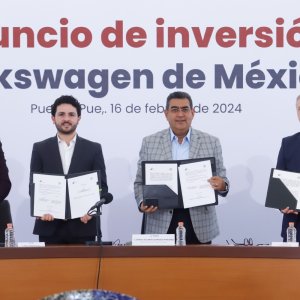FTA Is Finally Signed and Delivered. Here Is Why It Matters

STORY INLINE POST
Singapore is the very first country with whom the Pacific Alliance (PA) countries have collectively signed a Free Trade Agreement. The signature comes after four years of negotiation and before other countries that would be perceived to be much closer both geographically and economically.
As Mexico takes over the pro-tempore presidency of the Pacific Alliance for 2022, it is clear that the time is now for Mexican and Singaporean companies to explore collaboration and plant the seeds to be ready to leverage the agreement when ratified.
The Pacific Alliance – Singapore Free Trade Agreement (PASFTA) is significant for three key reasons.
First, access to opportunities in increasingly integrated, sizable regional growth markets with an expanding middle class.
With the agreement there is an additional channel for companies to access opportunities and do business in a new region. For Singapore companies, it opens an increasingly integrated collective market (Chile, Colombia, Mexico and Peru) that makes up the eighth-largest economy in the world with a combined GDP of over US$2 trillion in 2021. For Latin American companies, Singapore offers a base to tackle an also increasingly integrated Southeast Asian market in ASEAN, comprising 10 countries (Brunei, Cambodia, Indonesia, Lao, Malaysia, Myanmar, Philippines, Singapore, Thailand and Vietnam) with a combined GDP of US$2.8 trillion in 2021.
Singapore’s trade and investment with the PA forms a significant portion of its trade with the Latin America and Caribbean region. There are already over 100 Singapore companies doing business in the PA, and they span diverse sectors, including agri-food, technology and innovation, and infrastructure. Examples of such companies include Banyan Tree Hotels & Resorts, Boustead Singapore Limited, Grupo Kaybee, Olam International, Pacific International Lines, and Shopee. There are also PA companies that are becoming increasingly interested in Asia.
Second, diversification of Singapore sources of imports and PA’s export destinations.
It will also contribute to strengthening supply chain resilience for both regions. This is important, especially in situations where traditional export or supply markets face a shortage. It also provides leverage to find better prices. This has been evident in the recent times of uncertainty during the global pandemic.
The PA countries are also able to increasingly export food products and other raw materials for Asian industries, enhancing the existing exports of chemicals, frozen salmon, and cherries from Chile; Coffee from Colombia; avocados and medical instruments from Mexico: and minerals and chilled vegetables from Peru.
Now there is also an opportunity to consolidate and create better volumes to increase the “return cargo” from Latin America into Asia, which will improve the feasibility of more direct and better shipping routes.
Third, the PASFTA has laid the foundation for Singapore to be the first associate member of the Pacific Alliance.
We will be exploring new areas of collaboration, such as the digital economy and the green economy, two areas we have started to explore with Chile but are keen to expand to the other PA states.
The Digital Economy Partnership Agreement supports businesses engaging in cross-border trade and e-commerce by facilitating seamless end-to-end digital trade, enabling trusted data flows, and building trust in digital systems.
We are also keen to collaborate with the PA on initiatives such as green energy and carbon credits. For example, Singapore and Chile signed a Memorandum of Understanding last year to foster cooperation on projects and initiatives to advance the deployment of hydrogen as an alternative energy source.
What differentiates PASFTA from the P4 or CPTPP?
The PASFTA includes modern provisions that cater to today’s business needs and realities. It builds on existing agreements like the P4 and CPTPP. There are a number of new and innovative chapters that complement the traditional areas of trade in goods, services, and investment. Some examples are the chapters on:
- Small and Medium Enterprises (SMEs), which aims to promote an environment that supports the growth and competitiveness of SMEs.
- Good Regulatory Practices, which aims to promote an open, fair, and predictable regulatory environment for businesses; and
- Economic and Trade Cooperation, which facilitates collaboration in the areas of (i) industrial services; (ii) innovation, science, and technology; (iii) trade infrastructure; and (iv) transport and urban mobility infrastructure.
- The PASFTA is also Singapore’s first FTA with a dedicated Maritime Chapter. This aims to grow international maritime transport services between the PA and Singapore, enhance our physical connectivity, and foster cooperation in maritime activities through the exchange of best practices, knowledge, and training opportunities.

With the new PASFTA, we are excited to deepen relations between Singapore and the PA countries. Beyond the benefits of the FTA itself, the PASFTA builds new bridges, links, and friendships between two regions.
As we emerge from the COVID-19 pandemic, we are confident that trade will continue to be a key driver of the global economy.
Francisco J. Rios is Regional Group Director for Latin America at Enterprise Singapore, where he champions enterprise development and the internationalization of Singapore-based businesses in Latin America. Francisco_rios@enterprisesg.gov.sg























